Sensors already equip a range of tools to enhance monitoring capacity for conservation. Some of the higher bandwidth technologies, like camera traps and acoustic monitoring systems, have been essential elements of the conservation toolkit for decades, and thus have enough users that we've created dedicated WILDLABS groups to address them. But a whole range of lower bandwidth sensors beyond these core technologies are being increasingly integrated into conservation monitoring systems, and offer rich new insights into the wildlife and ecosystems we're all working to protect. As with many technologies, cost and access have historically been challenges to the adoption of new sensors, but with low-cost and open-source solutions on the rise, we're excited to see what the future of this space holds.
Getting Started with Sensors:
- Watch Shah Selbe's Tech Tutors episode on scaling FieldKit, an open-source conservation sensor toolbox, from a project to a successful conservation tech product.
- Check out our Virtual Meetup about Low-Cost, Open-Source Solutions in conservation tech, including a talk by Alasdair Davies on the Arribada Initiative's work with thermal sensors in early warning systems.
- For a more in-depth introduction, watch the first video in our datalogger mini-series: Freaklabs: How do I get started with Arduino?
In this group, you'll meet others who are using and innovating diverse sensors in their work, discuss ways to make sensors more effective & accessible for conservationists, learn about what sensors are already helping us accomplish in the field, and have the opportunity to ask and answer questions. Join this group to get started!
Header image: Emma Vogel, University of Tromsø
No showcases have been added to this group yet.
- 0 Resources
- 0 Discussions
- 16 Groups
- @jenlaw
- | She/Her
Biodiversity scientist specialising specialising in the study of tropical ecosystems and their biodiversity using multiple forms of technology, including acoustics, images and robotics.
- 0 Resources
- 0 Discussions
- 14 Groups
CEO of Anicare. Anicare produce next generation ear tag form tracking device for wildlife tracking


- 0 Resources
- 1 Discussions
- 6 Groups
The University of Queensland
Passionate about using technology and data to solve conservation issues.
- 0 Resources
- 2 Discussions
- 9 Groups
- @jscanass
- | he/him
University College London (UCL) & Red Ecoacústica Colombiana
PhD Student at UCL
- 0 Resources
- 1 Discussions
- 8 Groups
- @parlaynu
- | he/him
software engineer
- 0 Resources
- 0 Discussions
- 13 Groups
Conservify
Community Manager for FieldKit

- 5 Resources
- 2 Discussions
- 3 Groups
- 0 Resources
- 0 Discussions
- 11 Groups
- 0 Resources
- 0 Discussions
- 2 Groups
Arribada Initiative
Director at Arribada, a UK-based conservation technology research & development organisation



- 2 Resources
- 101 Discussions
- 12 Groups
I run a small consulting company, Simeone Consulting, LLC, that provides research, data-driven analysis, technical expertise, and writing related to the production, consumption, and international trade of natural resources.
- 0 Resources
- 4 Discussions
- 4 Groups
- 0 Resources
- 1 Discussions
- 4 Groups
Careers
Conservify is seeking a hands-on Senior Software Engineer with front end and back end experience developing rich web and mobile applications, and a strong desire to build a best-in-class product that stands out in both...
9 December 2022
Conservify is seeking a hands-on Senior Product and Production Manager with strong interpersonal and organizational skills to remotely lead a small seasoned team of thinkers, designers and engineers who are shaping the...
9 December 2022
a technology-led solution to understanding the honeybees of the wasp world
8 December 2022
"We develop the use of benthic species as animal oceanographers by combining archival (depth, temperature) data from animal-borne tags, passive acoustic telemetry & citizen-science mark-recapture records for the...
10 October 2022
Apply now for $2,500–$15,000 USD grants for early-stage ideas or projects that address global challenges.
4 October 2022
The device could help scientists explore unknown regions of the ocean, track pollution, or monitor the effects of climate change.
26 September 2022
This paper released by the World Economic Forum and the SPACES coalition shows how businesses can embrace the use of spatial intelligence for action on nature and climate. How can we make sure businesses apply the...
23 September 2022
This role will be employed under Osa Conservation's Movement Ecology Program. Broadly, the project aims to develop and use novel animal tracking technology to increase our understanding of the movement ecology of...
22 September 2022
Careers
The Senior Conservation Technology Specialist will be responsible for providing technical advice and capacity development to GWP project teams on conservation technology, distilling challenges and lessons from project...
22 September 2022
Boost cons tech capacity at an international NGO! Fauna & Flora International is offering a paid three-month internship to consolidate and share best practices for the application of emerging hardware and software...
26 August 2022
Article
An update on Ceres Tags products that are being used in conservation
22 August 2022
Are you interested in joining a team dedicated to changing how conservation is conducted around the world by developing new genetic technologies for conservation, and being part of the new wave of scientists paving a...
15 August 2022
August 2025
event
September 2025
event
March 2026
December 2023
event
17 Products
Recently updated products
121 Products
3 R&D Projects
84 Organisations
Recently updated products
Recently updated R&D Projects
Recently updated organisations
| Description | Activity | Replies | Groups | Updated |
|---|---|---|---|---|
| First things first, our team — @jcguerra10 , @bmgarrido , and special acknowledgment to @Mantolehmann, who joined... |
|
Build Your Own Data Logger Community, Data management and processing tools, Sensors | 1 year 4 months ago | |
| Hi @Henrikcox I hope you are well. I am not sure if you may remember myself and my colleague from CLS. We had a meeting and met in-person at Earthranger last year. ... |
+15
|
Human-Wildlife Coexistence, Sensors | 1 year 4 months ago | |
| Unless you are planning on making a mesh network between nodes then the total distance spanning the location of all the nodes is important to know, not just the intra node... |
|
Sensors, Protected Area Management Tools | 1 year 5 months ago | |
| Hi Danilo. you seem very passionate about this initiative which is a good start.It is an interesting coincidence that I am starting another project for the coral reefs in the... |
|
Acoustics, AI for Conservation, Animal Movement, Camera Traps, Citizen Science, Climate Change, Community Base, Connectivity, Drones, Emerging Tech, Human-Wildlife Coexistence, Open Source Solutions, Sensors, Software Development, Wildlife Crime, Funding and Finance | 1 year 6 months ago | |
| Real nice video. I'll have another look in the weekend in detail. |
+10
|
Acoustics, Community Base, Protected Area Management Tools, Geospatial, Sensors | 1 year 6 months ago | |
| Fire detection is a sort of broad idea. Usually people detect the products of fire, and most often this is smoke.Many home fire detectors in the US use a radioactive source... |
|
Community Base, Conservation Tech Training and Education, Data management and processing tools, Ethics of Conservation Tech, Human-Wildlife Coexistence, Open Source Solutions, Protected Area Management Tools, Sensors, Wildlife Crime | 1 year 6 months ago | |
| Thank you for sharing! Super interesting, as we don't see many underwater stereo cameras! We also use Blue Robotics components in our projects and have found them reliable and... |
|
Sensors, Camera Traps, Marine Conservation | 1 year 7 months ago | |
| I am working on a prototype to detect and alert for temic & karbadust. They are used for the poisoning of waterholes in South Africa.... |
|
Sensors | 1 year 7 months ago | |
| Will you accept personal/hobbyist focused on conservation on their small plots of land (10-100 acres)?I would, and know others, who would happily pay more than the official... |
|
Camera Traps, Climate Change, Community Base, Connectivity, Emerging Tech, Human-Wildlife Coexistence, Sensors, Wildlife Crime | 1 year 7 months ago | |
| Hi,This is a really late answer but I was new to wildlabs then. I have a security appliance that uses state of the AI models and user defined polygon areas of interest that... |
|
Human-Wildlife Coexistence, Camera Traps, Sensors | 1 year 8 months ago | |
| Featuring some of the very best spider video you'll ever see.. @JayStafstrom has been pushing the boundaries of camera technology,... |
|
Camera Traps, Sensors | 1 year 8 months ago | |
| I always thought a tracker that attached like a slap bracelet would be sweet. |
|
Emerging Tech, Sensors | 1 year 8 months ago |
Southern right whale superpod blows a hole in the record books
22 November 2018 12:00am
Camera traps designed for animals are now invading human privacy
22 November 2018 12:00am
A technologist's journey to protect wildlife: The reality and potential of conservation technology (recorded talk)
22 November 2018 12:00am
WILDLABS Virtual Meetup: Networked Sensors for Security and HWC Prevention
12 November 2018 12:00am
WILDLABS Virtual Meetup Recording: Next Generation Wildlife Tracking
12 November 2018 12:00am
Tusk Conservation Lecture 2018: Ted Schmitt
 Tusk
Tusk
15 October 2018 12:00am
Underwater Robot Trained to Kill Coral-Destroying Reef Starfish
18 September 2018 12:00am
Next Generation Animal Tracking Ideation Challenge
14 September 2018 12:00am
Thermal imaging, drones, and sea turtles: a case study using FLIR’s new Duo Pro R camera
23 August 2018 12:00am
How to share data on species to help conserve them… whilst avoiding them being exploited by poachers
20 August 2018 12:00am
Ocean Hack: San Francisco, 10-11th September, 2018
 One Ocean Collab
One Ocean Collab
20 August 2018 12:00am
Thermal Sensor Project Update: Testing with live animals at the San Diego Zoo
27 July 2018 12:00am
HWC Tech Challenge: Smart Electric Fence Solution
5 June 2018 12:00am
From drone swarms to tree batteries, new tech is revolutionising ecology and conservation
 Euan Ritchie
and 1 more
Euan Ritchie
and 1 more
9 May 2018 12:00am
Eddy Expedition Log: Characterizing Eddies
23 April 2018 12:00am
HWC Tech Challenge: Thermopile Sensor Project
19 April 2018 12:00am
Eddy Expedition Log: Chasing Eddies
10 April 2018 12:00am
What technologies could help us monitor cave invertebrates?
23 July 2016 8:44am
9 April 2018 2:35am
Hi Tony, I'm leading a cross disciplinary group of researchers at Deakin University in Australia to build new technology for monitoring wildlife and engage citizen scientists with collecting data.
We have designed a video trap for monitoring reptiles and amphibians, that uses constant video and has some on-board AI to not save video with nothing in it. Works day and night (UV illumination at night), but uses a lot of power so we have a battery and solar panel arrangement. I expect this could be easily adapted to monitor cave fauna. Let me know if you already have a solution or want to discuss idea further.
Don Driscoll
d.driscoll@deakin.edu.au
Thermal imaging scopes
26 March 2018 9:26pm
27 March 2018 2:20pm
Hi Luke,
I'll leave specific recommendations to others who are better qualified ( @Eric+Becker @Rachel+Kramer or @Alasdair - maybe you can advise?) but I did come across something yesterday that may be relevant.
There is a live GroupGets campaign on at the moment (2 days left) for DIY-theromocam kits - not a scope but could do the trick if your budget is restricted as it's under $300 and you're willing to dabble in DIY?
The DIY-Thermocam is a do-it-yourself infrared camera, based on the FLIR Lepton long-wave infrared sensor and the popular Teensy 3.6 ARM Cortex M4 MCU.
The aim of this project is to give private persons, educational institutes and companies access to a portable, affordable and customizable thermal imaging plattform.
There are various applications like finding heat leaks in the insulation of buildings, the analysis of electrical or mechanical components, the detection of persons / animals or even mounting it on a drone, together with the additional video out module.
Constructed as a self-assembly solution, the DIY-Thermocam allows you to take advantage of the versatile possibilities of thermal imaging and to save money at one go.
Everything, from software to hardware, is completely open-source. This allows everyone to modify or extend the functionalities of the device to their own needs.
GroupGets does now offer a complete self-assembly kit, so you don't have to worry about buying all the parts on your own.
A scientific paper is also available, giving an overview about the whole project and its capabilities.
Update: haraldg has written a nice set of tools for post-processing the thermal raw data files. Check it out here. He also published a short article about manual calibration here.
3 April 2018 3:39pm
Hi @Luke_edwards - I just had a chat with my colleagues @Eric+Becker and @ColbyLoucks at WWF who will get back to you with some recommendations from experience with the thermal scopes that we've explored for anti-poaching (FLIR TK and SCOUT III).
Great to see that you're pairing conservation dogs and thermal imaging for wildlife surveys in Australia. In order to select the most cost-effective thermal imaging scope for your needs, it's important to know the range that you require, density of vegetation and size of the species you are monitoring. Can you share a bit more information on your parameters?
3 April 2018 11:03pm
The current project is in open plains. From a handler perspective the distance will be from 20m -100m. I will be working at night so it will be looking for me target, the Plains Wanderer, a small bird. Also it would be used to see other native and domestic animals in the area.
Other projects range from open plains through to rain forests.
Eddy Expedition Log: Setting Off to Explore Eddies
3 April 2018 12:00am
The Plant-Powered Camera Trap Challenge
3 April 2018 12:00am
Hacking together DIY time-lapse soil cameras
29 March 2018 11:35am
#Tech4Wildlife Photo Challenge 2018: Our Top 10
3 March 2018 12:00am
Landsense Innovation Challenge
19 February 2018 12:00am
Technology Empowered Conservation Lecture Series
18 January 2018 12:00am
Instant Detect 2.0: A Connected Future for Conservation
17 January 2018 12:00am
Congratulations to Zoohackathon winners, team ODINN!
6 December 2017 12:00am
FIT Cheetahs
4 December 2017 12:00am
How The San Diego Zoo Is Using AI And Drones To Save Polar Bears
30 November 2017 12:00am
RaspberryPI
5 March 2016 7:35am
20 May 2016 11:10pm
Pi Zero get a little upgrade... Anyone need a camera trap?
http://petapixel.com/2016/05/19/5-raspberry-pi-zero-now-camera-compatible/

11 October 2017 10:09am
Hi All,
just sharing this for all those Raspberry Pi beginners like me, 91% off a training bundle
https://deals.thenextweb.com/sales/complete-raspberry-pi-3-2
2 November 2017 6:02pm
Also if you are still looking for a solution this was published earlier this year and gives recommendations for soundscape microphones : http://onlinelibrary.wiley.com/doi/10.1111/2041-210X.12678/full






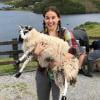








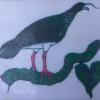
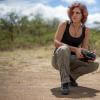























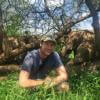
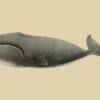
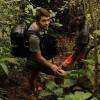





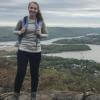



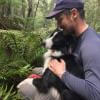




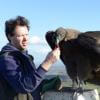
31 March 2023 2:15pm